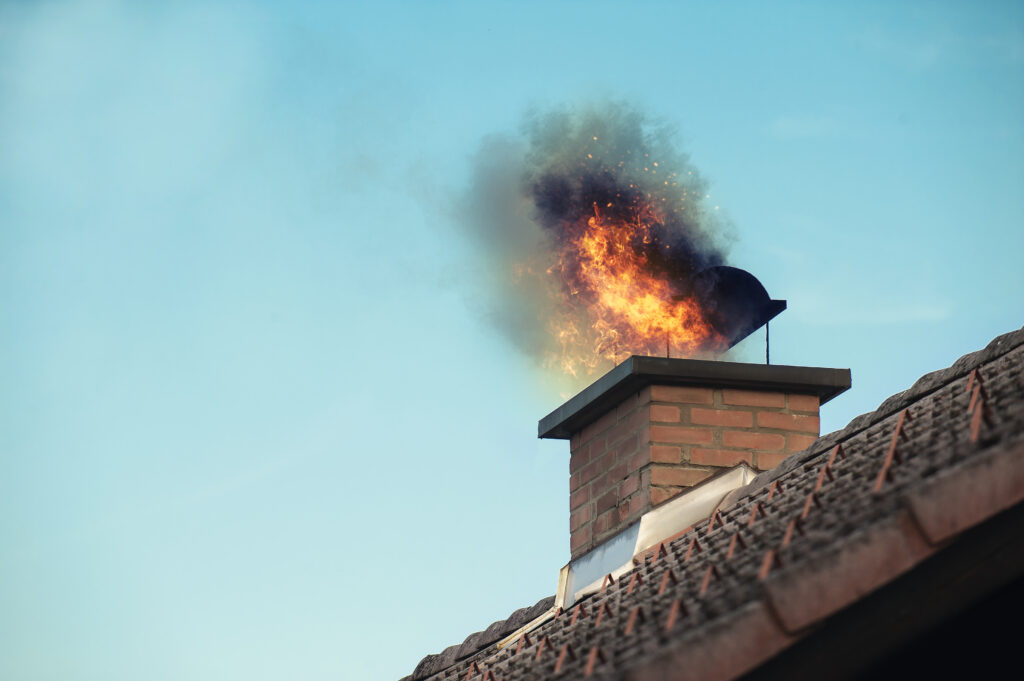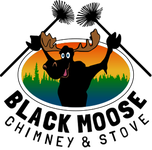
One of the biggest challenges a wood stove or fireplace owner faces is keeping their system maintained to prevent chimney fires. Chimney fires can cause extensive damage to the chimneys they occur in, as well as also to the homes themselves.
A chimney fire occurs when a buildup of combustible creosote accumulation within a flue catches fire. These fires can be the classic free-burning “freight train” type, or a slow-burning “silent” type. Both types damage the chimney and can spread.
Preventing the buildup of combustible types of creosote is the best way to prevent a fire. The combustible (darker) types of creosote form when combustion within the wood stove or fireplace is incomplete (dirty/smokey). Wet wood, older appliances and poor burning habits (such as low burns) all contribute to your chimney building up a layer of combustible fuel within it, which catches fire. Often, this happens on one of those really cold stretches of weather. A homeowner will burn the stove hotter, which heats up the chimney and starts the fire.
These fires heat up the inner wall of the chimney (whether made of clay tile or stainless steel) hotter than it should be. This causes those parts to fail or deteriorate, and if the flue already has some existing damage, as is the case in a lot of clay tile flues, this can promote the spread of heat to surfaces touching the brick of the chimney (framing, insulation, etc.).
Another common hazard during a chimney is that flaming material can exit the top of the chimney and fall onto a home’s roof. Even when the inner flue liner is in good shape and able to contain the heat, the hot flaming material raining down onto the roof poses a significant and obvious hazard.
If you find you have a chimney fire what should you do?
1) Call 911: This is a proper emergency, and the fire department needs to respond.
2) Evacuate the house: If possible, you can shut down the damper or air control on your stove first, if it is safe to do so.
3) Call a proper, certified, and experienced chimney professional: Why certified? Those companies usually have the training and tools to properly inspect a chimney and look for damage. Camera systems are often needed to properly view a flue liner and detect damage, which is key to preventing future issues. Our company’s service technicians are NCSG-certified, but there are others.
4) Fix the damage: Flue tiles nearly always receive damage from the shock heating which occurs during a fire, which as said above can be one of the factors which contributes to a future spread of fire beyond the chimney. Schedule chimney repairs as soon as possible.
5) Consider insurance: Often this is a covered event with most home owner’s insurance companies. Repair costs can be substantial, so this can help offset those costs if covered.
6) Ask for documentation: If a post-fire inspection is being done, there will be photos, notes, and a report which will be important to keep and forward to your insurance company.
If you’d like to schedule an appointment, click here or call (603) 525-7905. Be safe out there and stay warm!
Questions? Ready for an Appointment? Contact Us Today!
We are South-Central New Hampshire’s #1 choice for chimney, fireplace & masonry services. Our team is National Chimney Sweep Guild (CCP/NCSG) certified and well-trained in current industry standards and procedures. We are ready to assist with inspections, repairs and installations for chimneys, fireplaces, wood and pellet stoves and more.


